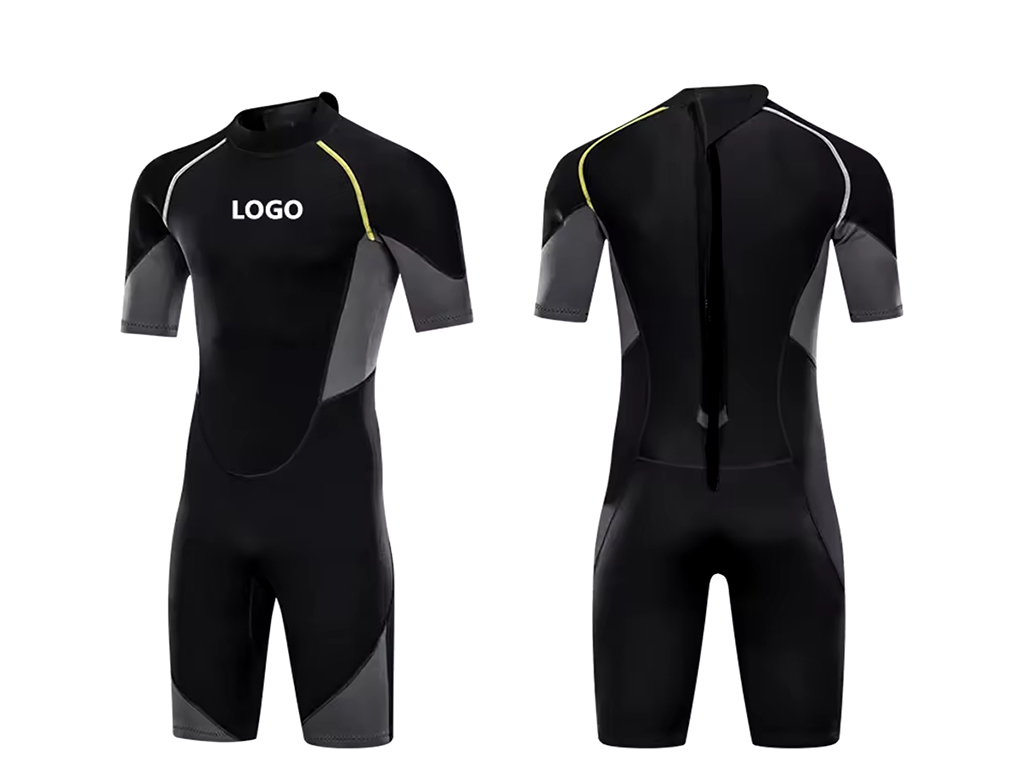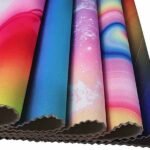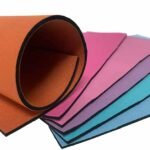When it comes to water sports, choosing the right wetsuit can make or break your experience. Whether you’re a surfer, diver, swimmer, or just someone who enjoys spending time in the water, selecting the right wetsuit will ensure comfort, protection, and longevity. But with a variety of wetsuit types, materials, and features, how do you know which one is best for your specific needs?
This comprehensive guide will take you through everything you need to know about wetsuits—from the different types and materials to sizing, features, and budget considerations. By the end of this guide, you’ll have all the information you need to make an informed decision and choose the wetsuit that fits your lifestyle and water activities.
Wetsuit Materials
Wetsuit material is key to determining how effective it will be in keeping you warm, flexible, and comfortable in the water. The majority of wetsuits are made from neoprene, a type of synthetic rubber known for its water-resistant and insulating properties.
Neoprene Basics
Neoprene works by trapping a thin layer of water between your skin and the suit. This water is quickly warmed by your body heat, creating a barrier that helps to insulate you from the cold. The thicker the neoprene, the better its ability to keep you warm—but thicker material also means reduced flexibility.
Types of Neoprene
While standard neoprene is common in most entry-level wetsuits, there are different grades available. Higher-end wetsuits use super stretch neoprene or limestone-based neoprene, which are both more flexible, lighter, and more comfortable. Super stretch neoprene allows for better mobility, which is important for activities like surfing, where flexibility is essential for paddling and maneuvering.
Limestone-based neoprene is also eco-friendly compared to petroleum-based neoprene, offering better insulation, durability, and a smaller carbon footprint.
Example of Neoprene Types:
| Neoprene Type | Flexibility | Durability | Insulation | Environmental Impact |
|---|---|---|---|---|
| Standard Neoprene (Petroleum) | Moderate | High | Moderate | Higher |
| Super Stretch Neoprene | High | Moderate | High | Moderate |
| Limestone-Based Neoprene | High | High | Very High | Low |
Eco-Friendly Alternatives
In recent years, brands have started using more sustainable alternatives to traditional neoprene, such as Yulex. This is a natural rubber material derived from plants that provides similar insulation and flexibility but with a lower environmental impact.
If environmental responsibility is a priority, consider looking for wetsuits made from recycled neoprene or plant-based alternatives. These wetsuits are often just as functional as traditional options but help reduce your carbon footprint.
Types of Wetsuits
Wetsuits come in various styles, each designed for different activities and water temperatures. The type of wetsuit you choose depends on where you’ll be using it and what kind of water sport you’ll engage in.
Full Suit (Steamer)
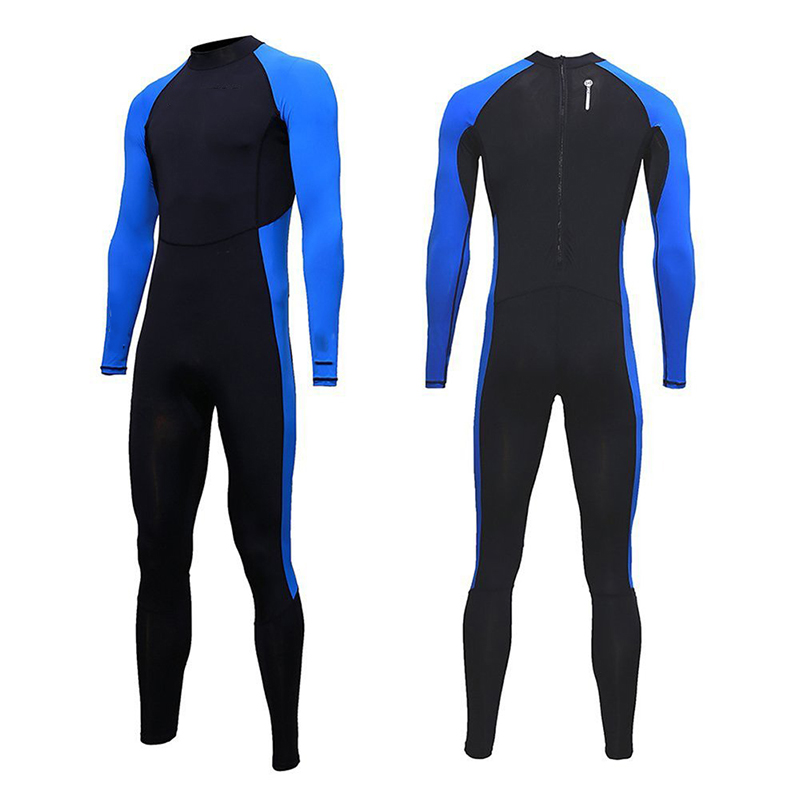
A full wetsuit, often referred to as a steamer, provides complete coverage from the neck down to the ankles and wrists. It’s the most popular choice for cold-water sports like surfing, diving, and open-water swimming. Full wetsuits are commonly available in different thicknesses, from 3mm to 7mm, depending on the water temperature. For example, a 5/4mm full suit (5mm on the torso and 4mm on the limbs) is ideal for colder water (50°F – 60°F).
- Best for: Cold water activities (e.g., surfing in winter, scuba diving, etc.)
- Key Features: Full-body coverage, thicker neoprene, more insulation.
Shorty Wetsuit

A shorty wetsuit covers your torso but has short sleeves and legs. It’s ideal for warmer waters (around 70°F and above), where you need less insulation but still want protection from the elements, UV rays, or minor scrapes.
- Best for: Warm water activities (e.g., snorkeling, surfing in tropical areas).
- Key Features: Lightweight, short arms and legs, offers basic insulation.
Spring Suit
A spring suit is a middle ground between a shorty and a full suit. It often has long sleeves with short legs or short sleeves with full legs, making it a good option for moderate temperatures. Spring suits are typically made with 2mm to 3mm neoprene.
- Best for: Mild water temperatures (e.g., spring or autumn surfing, stand-up paddleboarding).
- Key Features: Partial coverage, increased flexibility compared to full suits.
Two-Piece Wetsuit
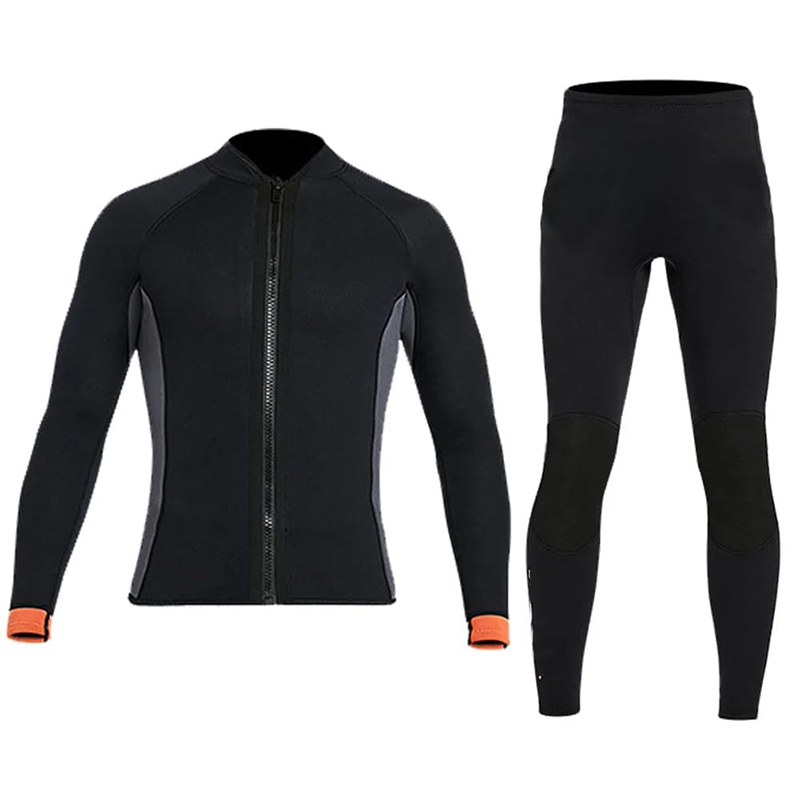
Two-piece wetsuits consist of a separate jacket and pants, offering versatility for those who want the option to mix and match based on changing conditions. You can wear just the jacket in warmer water or add the pants for additional warmth when necessary.
- Best for: Variable conditions (e.g., spearfishing, freediving, etc.)
- Key Features: Layering option, allows flexibility in temperature regulation.
Drysuits
Unlike wetsuits, drysuits keep you completely dry by preventing water from entering. They are designed for extremely cold water and can be paired with thermal layers for added warmth. Drysuits are often used for activities like diving in cold waters or kayaking in freezing conditions.
- Best for: Extreme cold conditions (e.g., Arctic diving, winter kayaking).
- Key Features: Sealed at neck, wrists, and ankles; requires additional insulation layers.
Wetsuit Thickness and Insulation

Wetsuit thickness is one of the most crucial factors in determining how warm you’ll be in the water. Wetsuit thickness is usually indicated as a set of numbers like 3/2mm, which means 3mm of neoprene is used for the torso (where you need the most warmth), and 2mm is used for the arms and legs (for better flexibility).
Choosing the Right Thickness
The thicker the neoprene, the more insulation it provides, but it also affects mobility. For this reason, wetsuits for cold waters use varying thicknesses, with thicker material around the core and thinner neoprene on the limbs. Here’s a general guideline for choosing wetsuit thickness based on water temperature:
| Water Temperature | Wetsuit Thickness |
|---|---|
| 75°F and above | 1mm – 2mm (Shorty) |
| 65°F – 75°F | 3/2mm (Full Suit) |
| 50°F – 65°F | 4/3mm or 5/4mm (Full Suit) |
| Below 50°F | 6/5mm or 7mm (Full Suit or Drysuit) |
As you can see, the colder the water, the thicker the neoprene you’ll need. For example, a 5/4mm wetsuit is a common choice for surfers who want to stay warm in cold water (around 50°F – 60°F), while a 3/2mm suit is perfect for mild conditions in the 65°F – 75°F range.
Internal Linings for Extra Warmth
Many modern wetsuits come with thermal linings that enhance insulation. These linings, often made from fleece-like materials, trap air pockets to keep you warmer for longer. They also wick away moisture, reducing drying time between sessions.
Wetsuit Features and Technology
Not all wetsuits are created equal. Some come with advanced features that improve performance, warmth, and durability. Here are some of the key features to look out for:
Seam Construction
The seams of a wetsuit play an important role in keeping water out and ensuring durability. There are three main types of seam constructions:
- Flatlock Seams – Flatlock stitching overlaps two pieces of neoprene and is typically found in entry-level wetsuits. This type of seam is strong but not watertight, so it’s best for warmer waters where a little water seepage isn’t an issue.
- Glued and Blind-Stitched Seams (GBS) – In this method, the neoprene panels are glued together and then stitched halfway through. This creates a strong, waterproof seam ideal for colder water. GBS seams are often found in mid-range wetsuits.
- Liquid-Sealed Seams – These seams are fully waterproof because they are sealed with a liquid rubber layer. This method is used in high-end wetsuits and offers maximum durability and warmth.
| Seam Type | Waterproofing | Durability | Use Case |
|---|---|---|---|
| Flatlock Seams | Low | Moderate | Warm water wetsuits |
| Glued and Blind-Stitched | High | High | Colder water wetsuits |
| Liquid-Sealed Seams | Very High | Very High | High-performance and cold water |
Zipper Systems
There are three main types of zipper systems for wetsuits: back zips, chest zips, and zipperless.
- Back Zips: These
are the traditional zippers located on the back of the wetsuit, making them easy to put on and take off. However, they can allow more water to enter through the zipper, which may reduce warmth.
- Chest Zips: These zippers are located across the chest, offering a snugger fit and better water resistance. Chest zips can be harder to get into but offer better flexibility and warmth.
- Zipperless: Newer wetsuit designs eliminate zippers altogether, offering the most flexibility and reducing water entry points. However, they can be difficult to put on and may stretch over time.
How to Get the Right Wetsuit Fit
Fit is one of the most crucial aspects of choosing a wetsuit. A well-fitting wetsuit should feel snug but not restrictive. Here are a few tips for finding the right fit:
- No Gaps: Your wetsuit should be tight against your skin without any loose areas, especially around the neck, wrists, and ankles. Gaps will let water in and reduce the insulation effect.
- Flexibility: You should be able to move your arms and legs freely, especially if you’re surfing or paddling. However, keep in mind that wetsuits will stretch slightly once they get wet.
- No Air Pockets: Avoid air pockets or wrinkles in the neoprene, as these can reduce flexibility and let in cold water.
Size Guide
Wetsuits come in various sizes, typically labeled as S, M, L, XL for men and XS, S, M, L for women. Many brands also offer size variations like MT (Medium Tall) for people with longer torsos or LS (Large Short) for those with shorter builds. Be sure to consult the brand’s size chart for precise measurements of height, chest, waist, and weight.
| Size | Height | Chest (inches) | Waist (inches) | Weight (lbs) |
|---|---|---|---|---|
| Small | 5’4″ – 5’6″ | 34″ – 36″ | 28″ – 30″ | 130 – 150 |
| Medium | 5’7″ – 5’10” | 38″ – 40″ | 32″ – 34″ | 150 – 170 |
| Large | 5’11” – 6’1″ | 42″ – 44″ | 36″ – 38″ | 180 – 200 |
It’s worth trying on a few different brands, as sizes can vary slightly. If you’re between sizes, it’s usually best to go for the smaller one, as wetsuits tend to stretch slightly when they are wet.
Wetsuit Accessories
In addition to your wetsuit, you may want to consider a few key accessories to enhance your experience in the water:
Wetsuit Gloves
Gloves provide extra insulation for your hands, which is essential in colder waters. Wetsuit gloves are available in various thicknesses, from 1.5mm to 5mm, depending on how much warmth you need.
Booties
Wetsuit booties keep your feet warm in cold water and protect them from sharp rocks or coral. Like gloves, booties range in thickness from 3mm to 7mm, and the thickness you choose should correspond to the water temperature.
Hoods
If you’re diving or surfing in extremely cold water, a wetsuit hood can protect your head and neck, preventing heat loss. Most hoods are made from 3mm to 5mm neoprene.

Wetsuit Care and Maintenance
Taking proper care of your wetsuit is essential if you want it to last for multiple seasons. Here are some tips to keep it in top condition:
- Rinse with Fresh Water: After every use, rinse your wetsuit thoroughly with fresh water to remove salt, chlorine, or sand that can degrade the neoprene.
- Dry in the Shade: Avoid direct sunlight, as UV rays can damage the neoprene over time. Instead, hang your wetsuit in a shaded area, ideally inside-out first, to allow it to dry thoroughly.
- Store Flat or Folded: Don’t hang your wetsuit by the shoulders, as this can stretch the material. Instead, store it flat or lightly folded when not in use.
- Use a Wetsuit Cleaner: Occasionally, use a specialized wetsuit cleaner to remove any lingering odors or bacteria.
How Much Should You Spend on a Wetsuit?
Wetsuit prices vary widely based on the material, brand, and features. A basic shorty wetsuit for warm water might cost around $50 to $100, while a high-end full wetsuit for cold water can run anywhere from $300 to $600 or more. Here’s a rough breakdown:
| Wetsuit Type | Price Range |
|---|---|
| Entry-Level Shorty | $50 – $100 |
| Entry-Level Full | $100 – $200 |
| Mid-Range Full | $200 – $400 |
| High-End Full | $400 – $600+ |
Conclusion: Making Your Final Decision
Choosing the right wetsuit involves understanding your water activity, climate, and personal preferences. Whether you’re surfing in tropical waters or diving in the cold depths, the perfect wetsuit is out there for you. Consider your needs carefully, and take the time to evaluate the various features, materials, and fit. Once you’ve made your decision, you’ll be ready to hit the water with confidence and enjoy your next adventure to the fullest!

